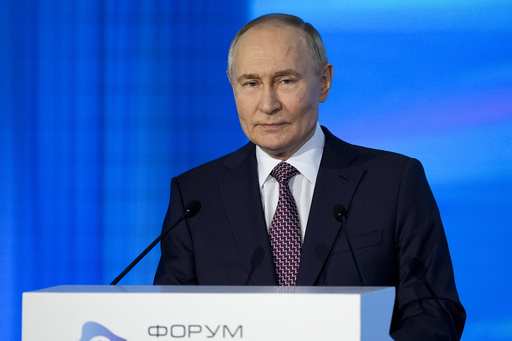
At the United Nations, a new draft resolution from the United States is generating contrast with a competing proposal backed by European nations, which calls for the immediate withdrawal of all Russian troops from Ukraine. This development is taking place as the third anniversary of Russia’s invasion of Ukraine approaches, with the U.N. General Assembly scheduled to vote on both nonbinding proposals.
The contrasting resolutions have put the U.S. and Europe at odds, raising questions about the durability of the transatlantic alliance, especially following the Trump administration’s unexpected shift in relations with Russia. The U.S. has pursued negotiations with Moscow after years of diplomatic isolation, aiming for a quick resolution to the ongoing conflict. European leaders expressed frustration over their exclusion, as well as that of Ukrainian officials, from preliminary talks that took place in Saudi Arabia between the U.S. and Russia.
The brief U.S. draft resolution expresses sorrow over the “tragic loss of life” resulting from the conflict and urges for an expedited conclusion and lasting peace between Ukraine and Russia. Vassily Nebenzia, Russia’s ambassador to the U.N., praised the U.S. proposal, calling it a “good move.” Russia then suggested an amendment to the resolution, adding the phrase, “including by addressing its root causes.” This modification would change the final wording to emphasize resolving the issues that led to the conflict.
In stark contrast, the initiative presented by the European Union and Ukraine explicitly refers to the “full-scale invasion of Ukraine by the Russian Federation.” The European draft reiterates the necessity to carry out all prior resolutions made in response to Russia’s aggression. It specifically calls for an “immediate, complete, and unconditional withdrawal” of all Russian military forces from within Ukraine’s recognized borders and demands an immediate halt to all hostilities.
The U.N. General Assembly has become the primary platform for addressing the situation in Ukraine since the Security Council is hindered by Russia’s veto power, preventing decisive action. Although General Assembly resolutions lack legal binding authority compared to Security Council decisions, they do serve as significant indicators of global sentiment regarding important geopolitical issues.
In an ongoing political context, President Donald Trump has controversially placed the blame for the war on Ukrainian President Volodymyr Zelenskyy. Trump has characterized Zelenskyy as a “dictator,” suggesting he must act quickly to negotiate peace or risk losing control of his country. In response, Zelenskyy criticized Trump, asserting that he was trapped in a “disinformation space” manufactured by Russia.
This unfolding situation underscores the complexity of international diplomacy involving Ukraine and highlights the contrasting positions held by the U.S. and European nations amid the ongoing conflict. The upcoming vote in the General Assembly promises to be a significant moment in the international community’s response to the war.

